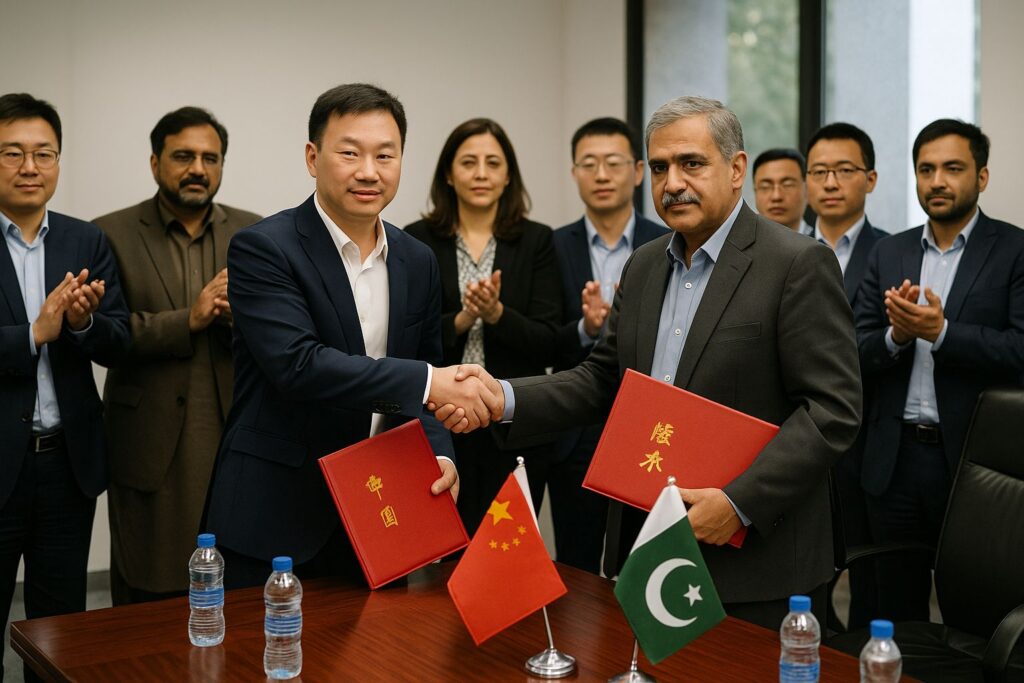
Pakistan’s commercial panorama is seeing a considerable trade as a primary Chinese apparel producer proclaims its plan to install a Special Economic Zone (SEZ) in the use of. This development isn’t best described as overseas funding but is a strong signal of growing monetary cooperation between Pakistan and China. Due to the backbone of Pakistan’s exports already with the textile and apparel sector, the initiative can reshape the future of trade, employment, and industrial development.
A Strategic Step Towards Industrial Development
The decision by way of a Chinese clothing corporation to set up an SEZ in Pakistan aligns with a complete vision of growing commercial cooperation under the China-Pakistan Economic Corridor (CPEC). By putting in place a devoted area, the agency aims to promote manufacturing potential, increase exports, and offer cutting-edge technology to Pakistan’s textile zone.
This step is not only about investment; it reflects confidence in Pakistan’s strategic location, cheap labor market, and increasing demand for high-quality textile products worldwide. SEZ will serve as a center for the manufacture, processing, and export of clothing in various international markets.
Why Pakistan?
Many factors make Pakistan an ideal destination for this venture:
- Textile Powerhouse – Pakistan’s textile and apparel industry contributes about 60% of its total exports, making it a natural fit for global investors in the region.
- Skilled Task Force – Trained in sewing, designing, and textile production, with thousands of workers, the local labor force can be compatible with international manufacturing standards.
- Strategic Location – Pakistan provides direct access to Middle Eastern, European, and African markets, reducing shipment cost and distribution time.
- Government Incentive – The Pakistani government is providing infrastructure support to attract tax exemption, duty-free imports of machinery, and SEZs for SEZ.
Technology Transfer and Skill Development
One of the most valuable results of this project will be the transfer of technology and expertise from China to Pakistan. SEZ is expected to introduce advanced apparel manufacturing machinery, quality control systems, and innovative production methods.
In addition, the company plans to cooperate with local training institutes for Pakistani workers. By increasing their technical knowledge, workers will not only earn better wages but will also contribute to increasing the overall competitiveness of Pakistan’s textile sector.
Employment and Economic Impact
Perhaps the most direct benefit will be employment generation. The installation of this Sez can cause thousands of direct jobs in apparel production, sewing, quality assurance, and packaging. In addition, indirect employment will grow in areas such as transport, logistics, and retail.
The multiplier effect will be sufficient. As workers earn more, their purchasing power will increase, which in turn will stimulate local businesses. This wave effect can strengthen Pakistan’s domestic economy by promoting foreign exchange reserves through high export revenue.
Strengthening Bilateral Ties
China and Pakistan already experience a sturdy partnership, and this improvement similarly strengthens bilateral economic relations. Such investments are beyond business-they create trust, intellect, and long-term cooperation. With the expectation of more Chinese companies, Pakistan may soon emerge as a regional center for cloth and apparel manufacturing.
Challenges to Address
While the project provides immense potential, it is not free from challenges. Pakistan will need to address issues such as:
- Energy Shortage – For running high-capacity government factories, a supply of continuous electricity and gas is required.
- Infrastructure Gaps – Smooth roads, warehouses, and modern ports are essential for efficient business operations.
- Regulatory Barriers – It would be important to maintain the procedures and to maintain interest from foreign firms to ensure and ensure investor-friendly policies.
If Pakistan successfully deals with these issues, the SEZ model can set an example for future foreign investment in other industries as well.
A Step Towards Industrial Modernization
This initiative should not be seen in isolation. This reflects an enormous shift towards commercial modernization in Pakistan. By welcoming overseas businesses to set up SEZs, the USA isn’t only inviting capital but also opening doors to innovation, efficiency, and global competition.
For Pakistan, this is more than just one apparel project. It is a chance to give itself a position as a reliable and attractive manufacturing center in South Asia.
Conclusion
The establishment of a Chinese garment Special Economic Zone in Pakistan is a game-changer for the textile sector and the national economy. With the employment era, generation switch, and export development opportunities, it guarantees long-term blessings. However, to completely capitalize on this funding, Pakistan must resolve infrastructure and regulatory challenges.
As the global competition in textiles intensifies, such an initiative gives Pakistan a chance to move ahead with just a raw material exporter and step into the role of a modern industrial player. If effectively managed, it can mark the beginning of a new era of industrial prosperity for the SEZ nation.

